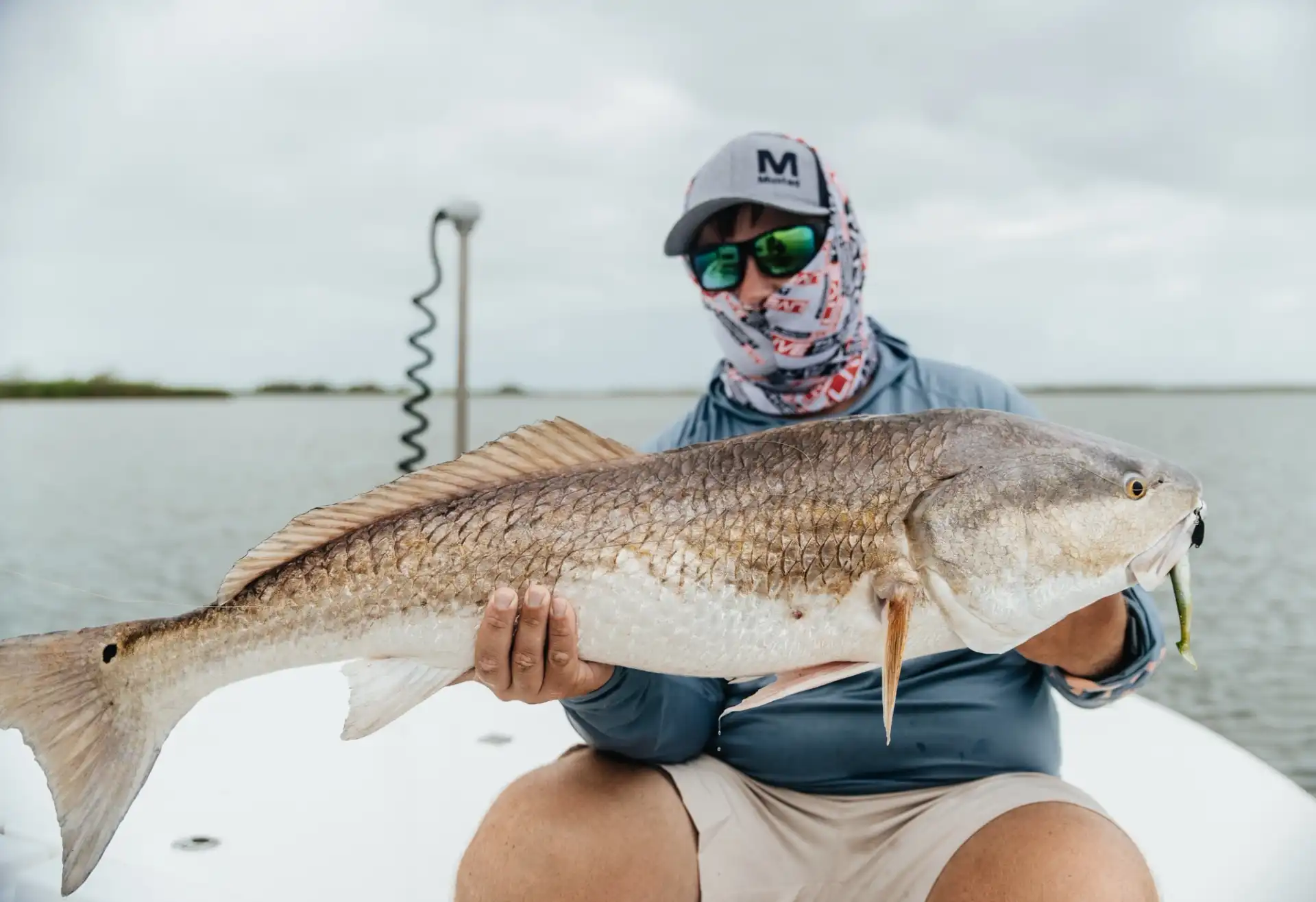Respect the Redfish Requirements

They’re one of the most highly sought-after of inshore species and for good reason. With shimmering copper scales, voracious appetites and the kind of strength and endurance that’ll please anglers of all levels, redfish are legit crowd-pleasers. These are bold, often aggressive fish that can, at times, be ridiculously easy. But there are also times when you’d think the fish all moved out of town. The variables are many, but paying attention to a few key factors will yield consistency.
Food
Redfish are not terribly complex in their motivation. They want abundant food sources, or they’re not interested. Given their schooling tendency, reds need a bunch or whatever they’re eating, so consider the grass flats, coastal marshes, mangrove basins and oyster bars where baitfish and crustaceans gather as your reliable targets.
Live bait’s always a good idea, but you’ll do well with soft plastic paddle tails and jerkbaits on Mustad Shad/Darter jig heads, LIVETARGET Sardine, Pinfish, or Mullet swimbaits, or a LIVETARGET Rigged Shrimp under a popping cork.
Personal Space
Not many fish will tolerate a bait dropping right on their head and redfish are certainly not so tolerant. This truth magnifies when reds are schooling, as spooking one fish means spooking the whole gang.
This is particularly true with topwater baits, like the LIVETARGET Hollow Body Mullet. Unless redfish are mingling with mullet, which creates such commotion you may be able to sneak a topwater into range, dropping a bait too close is the kiss of death.
When reds roam open waters without the mullet escort, you can expect a high level of nervousness, especially during sunny, clear conditions. The key here is to lead the school with a long cast, wait patiently for the fish to reach your bait and then work it quickly like natural forage fleeing the predators.
Depth Range
Redfish are versatile creatures that generally pass their juvenile years within inshore habitats and then move offshore as mature adults (around the 27- to 30-inch size). During their growing up period, you may find redfish slithering along shallow muddy areas where your options are mostly limited to fly fishing with crustacean patterns, or lightly tossing a live shrimp or small crab on a split shot rig with a Mustad Beak Hook.
Conversely, sub-adult reds might be found feeding in the deeper waters of coastal passes with rock jetties or under bridges. Hard surfaces are crustacean magnets and redfish love their crustaceans.
One point you will find consistent is the red’s appreciation for deeper water. In addition to those deep feeding opportunities, redfish also like the safety and security, along with the temperature moderation that depth offers.
What this means for anglers is twofold. First, when searching for reds, don’t overlook those inlets and channels. Spend some time finding the likely feeding spots — rocky points and gaps, barnacle-encrusted pilings — and consider where tides/current will pile up the baitfish.
On the other end of the spectrum, be mindful of where redfish can find those shallow feeding zones that allow them to better corral their food, while maintaining proximity to deeper water. Island edges, flats with sharp drop-offs, marsh alleys close to a main creek or cut, mangrove edges with nearby tidal troughs, shallow oyster bars with deeper water at one end; all of these scenarios fit the best-of-both-worlds theme.
Bottom line, you can reasonably expect to find redfish just about anywhere throughout the inshore realm, but you have to play by their rules. Stick with the script and you’ll keep the rods bent.




